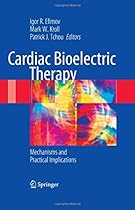Cardiac Bioelectric Therapy: Mechanisms and Practical Implications

| Author | : | |
| Rating | : | 4.29 (689 Votes) |
| Asin | : | 0387794026 |
| Format Type | : | paperback |
| Number of Pages | : | 634 Pages |
| Publish Date | : | 2016-04-05 |
| Language | : | English |
DESCRIPTION:
… This is an extremely thorough book on the mechanisms that drive the current clinical utility of pacemakers and defibrillators. From the reviews: "This book discusses the background of the theory and methodology that drive current pacing and defibrillation strategies. … The most likely readers are electrophysiologists, research scientists in the field of cardiac bioelectric therapy, or physician-scientists with an interest in this field. It will be a useful reference for many electrophysiologists and researchers in the field." (Louis A Salvaggio, Doody’s Review Service, February, 2009)
Excellent multiauthor book about the electrical behavior of the heart Efimov, Kroll and Tchou have put together a fine collection of articles about the electrical behavior of the heart. The book is particularly strong on reviewing two important subjects: 1) Mathematical modeling of the electrical properties of the heart using the bidomain model, and 2) Optical mapping techniques to record the transmembrane potential distribution in the heart. Most of the major researchers in this area have
The book will start from the historic overview of the subject, including the development of the pacemaker and defibrillator, evolution of theories of cardiac arrhythmias and experimental methods used in the field over the centuries. Part 4 will present new insights into defibrillation gained due to the advent of optical imaging technology, which permitted to map defibrillation without overwhelming shock-induced artifacts present in electrode recordings. The success of these therapies is largely due to centuries of scientific inquiry into the fundamental mechanisms of bioelectric phenomena in the heart. History of successful development of bioelectric therapies includes development of experimental and theoretical methodologies, novel bioengineering approaches, and state-of-the-art clinical implantable device therapies. Part 5 will provide rigorous overview of the methodologies, which made research of physiological and engineering aspects of ele
